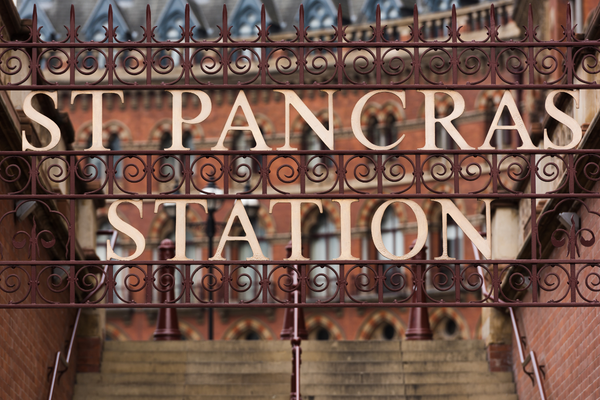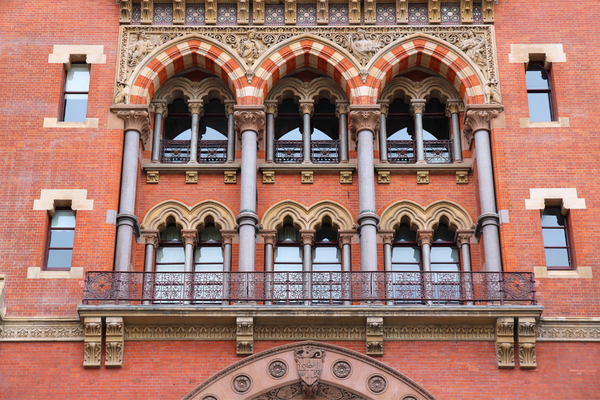This breathtaking architectural masterpiece has played a pivotal role in the growth and development of London over the past centuries while maintaining its status as an enduring cultural landmark. Join us as we delve into the fascinating story of St. Pancras Station, from its humble beginnings to its current position as a bustling transportation hub.

The Visionary Design
Completed in 1868, by the renowned architect George Gilbert Scott, the Gothic Revival style designed St. Pancras Station heavily influenced whose vision of the station. The station’s striking facade, replete with ornate detailing and an imposing clock tower, is a testament to Scott’s creative genius and the grand ambitions of the era. The adjoining Midland Grand Hotel, now known as the St. Pancras Renaissance Hotel, further exemplifies the opulence and extravagance characteristic of Victorian architecture.
The Railway Revolution
During the 19th century, St. Pancras Station emerged as a symbol of Britain’s railway dominance, connecting London to the industrial heartlands of the Midlands and the North. The station was lauded not only for its architectural beauty but also for its innovative engineering features. The immense train shed, designed by engineer William Henry Barlow, boasted the world’s largest single-span roof at the time, a remarkable achievement that earned St. Pancras Station international recognition.
 The Station That Almost Wasn’t
The Station That Almost Wasn’t
In the mid-20th century, St. Pancras Station faced the grim prospect of demolition and abandonment as British Railways pursued a modernization program favouring more contemporary and functional designs. A fierce campaign led by the poet Sir John Betjeman and other prominent figures ultimately saved the station, which was granted Grade I listed status in 1967, thus ensuring its preservation for future generations.
St. Pancras Today
In recent years, St. Pancras Station has undergone a revitalization that has seen the historic building transformed into a modern international transportation hub. The addition of Eurostar services in 2007 has reestablished the station’s importance as a gateway between London and the continent, while the comprehensive renovation of the St. Pancras Renaissance Hotel has breathed new life into Scott’s original vision. Today, St. Pancras Station is also home to an array of shops, restaurants, and cultural attractions, making it a popular destination for both Londoners and tourists alike.
St. Pancras Station is a living testament to London’s vibrant history and its evolution through the ages. From its early days as a symbol of Britain’s railway prowess to its current status as an international gateway, this timeless masterpiece continues to captivate and inspire. Whether you’re a seasoned Londoner or just visiting, a trip to St. Pancras Station is an unforgettable journey into the heart of London’s architectural and cultural heritage.
Listen to London History Podcast episode 105 St. Pancras Station



